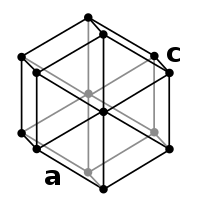
Photo from wikipedia
Historically, the resolution of multidimensional nuclear magnetic resonance (NMR) has been orders of magnitude lower than the intrinsic resolution that NMR spectrometers are capable of producing. The slowness of Nyquist… Click to show full abstract
Historically, the resolution of multidimensional nuclear magnetic resonance (NMR) has been orders of magnitude lower than the intrinsic resolution that NMR spectrometers are capable of producing. The slowness of Nyquist sampling as well as the existence of signals as multiplets instead of singlets have been two of the main reasons for this underperformance. Fortunately, two compressive techniques have appeared that can overcome these limitations. Compressive sensing, also known as compressed sampling (CS), avoids the first limitation by exploiting the compressibility of typical NMR spectra, thus allowing sampling at sub‐Nyquist rates, and pure shift techniques eliminate the second issue “compressing” multiplets into singlets. This paper explores the possibilities and challenges presented by this combination (compressed NMR). First, a description of the CS framework is given, followed by a description of the importance of combining it with the right pure shift experiment. Second, examples of compressed NMR spectra and how they can be combined with covariance methods will be shown.
Journal Title: Magnetic Resonance in Chemistry
Year Published: 2018
Link to full text (if available)
Share on Social Media: Sign Up to like & get
recommendations!